Monkey puzzle trees are fascinating plants.
At their biggest they can reach 50 metres in height, and can live for up to 1000 years!
Although they survive well in many locations, sometimes they can struggle if they do not have the right conditions for optimum growth.
This can show in the discolouration of the spines and branches.
Often people will wonder why is my Monkey Puzzle tree turning yellow, or even why is my Monkey Puzzle tree turning brown?
In this article we will cover the most common reasons and how to resolve them.
2. Transplantation Stress
3. Pot Bound
4. Too Much Or Too Little Water
5. Exposure
6. Natural Shedding Of Lower Older Branches
7. Damage To Branch
8. Scale Insects
9. Fungus: Rust
10. Fungus: Armillaria Root Rot “Honey Fungus”
Mineral Deficiencies
Monkey Puzzle trees are native to the fertile volcanic lower slopes of the Andes.
These soils are rich in nutrients and have slightly acidic to neutral pH level, although the Monkey Puzzle tree can also grow in mildly alkaline soils.
If you have a particularly poor soil, ie very sandy or shallow, it is possible that the tree cannot find enough nutrients to sustain healthy growth.
This can present as yellowing spines, or spines that are turning brown at the very end.
This could also be true if your Monkey Puzzle is in a pot.
How to fix:
- Work some compost into your soil along with grit – ideally you want a rich soil that is free draining.
- Ensure the tree has been planted where it can root deeply.
- The best fertiliser to use would be a generalised all-purpose water-soluble liquid that should cover a broad spectrum of nutrients and minerals.
- Use as directed, do not over fertilise as this can cause problems for the roots.
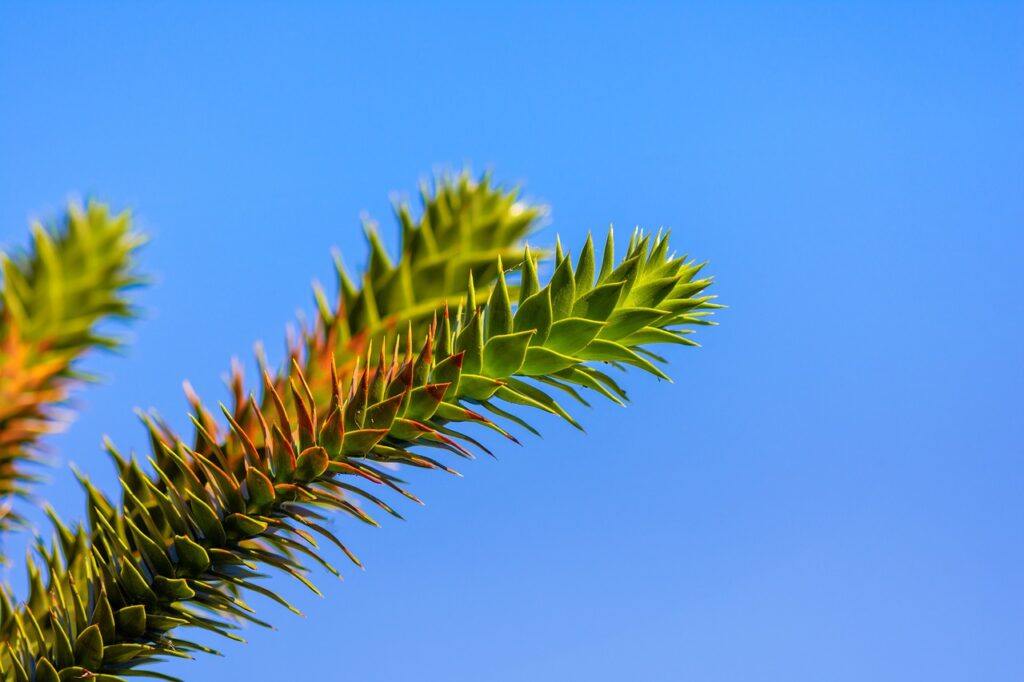
Transplantation Stress
Monkey Puzzle trees do not like root disturbance and so moving a tree can often cause stress and die back.
This is mainly because once they are established, their root system is quite deep.
Uprooting a Monkey Puzzle will damage the roots and shock the plant.
This could present as multiple branches turning yellow or brown.
The tree looks wilted and devitalised.
How to fix:
- If you are moving a Monkey Puzzle tree it is best to do it when they are young before the roots have had a chance to extend.
- Make sure you are moving it to an optimum position.
- For the plant to recover it will need the correct conditions, otherwise the stress of moving plus the stress of having the wrong soil, no sun or poor drainage will likely be too much and the plant will struggle and possibly die.
- When moving, do it early in the morning on a cool day.
- This will retain as much moisture in the plant as possible.
- Dig your hole in the new location first, this will minimise the time the plant is out of the soil.
- Try to take as much of the root system as possible and some of the surrounding soil.
- Wear strong gloves as the Monkey Puzzle is so prickly – if you cannot hold it properly you run the risk of dropping the plant and causing damage.
- Once moved, water in well, add mulch and provide support with a strong cane or post if needed.
- Keep an eye on it and water again if necessary to help it get established.
Pot Bound
As we have seen above, the Monkey Puzzle tree likes to root deeply.
While they do quite well in pots for a while – ideally they are better off in the ground.
You may notice your potted Monkey Puzzle looking straggly, with yellow or brown tips to the spines
In this situation it either needs a bigger pot, or if you have a sunny and sheltered spot in the garden, and you have good soil that is free draining (and you have a lot of room!) then it could go outside.
How to fix:
- Using strong gloves, carefully take the plant out of it’s pot and inspect the root system.
- If you can see large amounts of the roots and they have wound themselves around the pot, it is time to pot up or move outside.
- Provide some fresh compost either in the hole or in the new larger pot as the Monkey Puzzle will probably have used up the nutrients available in the pot.
- Select a larger pot and make sure the drainage is sufficient.
- Water in well so the water runs out the bottom of the pot.
- This will ensure the water reaches the roots and does not just sit at the top.
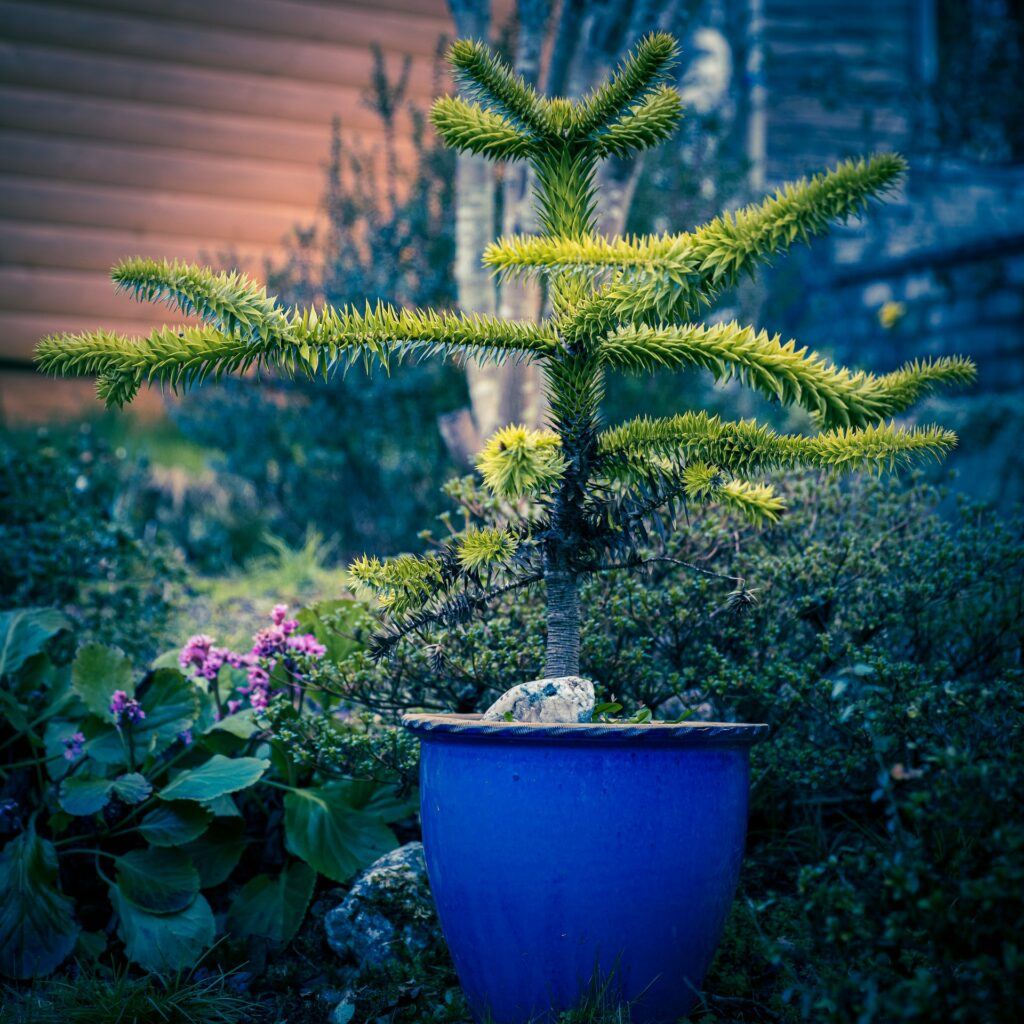
Too Much Or Too Little Water
Monkey Puzzle trees like a deep well drained soil but with a good amount of moisture
They can adapt to most different soil types but may struggle with heavy clay.
This is the least well draining of soils can cause water to sit around the roots.
If left unattended this can cause root rot in the form of Honey Fungus (see below).
How to fix:
- If your climate has a reasonable amount of rain (like the UK!) then this will likely be enough.
- Only provide extra water if the plant is very young, if the plant has just been moved, or if the weather is very warm and dry.
- In these cases provide regular / consistent irrigation.
- Consider also adding a layer of mulch.
- If you feel your plant is getting too much water, check to see if rainfall is collecting at the base.
- This can happen if your garden is sloped and the Monkey Puzzle is at the bottom, if so try to divert the water.
- If your soil is heavy and prone to waterlogging, work in some sand or grit to improve drainage.
Exposure
Monkey Puzzle trees like full sun but in a sheltered spot that is protected from wind.
Although fairly hardy, continued frosty winter winds can damage the spines and branches.
Very strong gusts can bend, or even snap the trunk.
How to fix:
- When choosing a position for your Monkey Puzzle tree, select a sunny spot protected from winds.
- If you have a spell of very windy weather, consider staking the tree to provide extra support.
- Always do this before it is needed, rather than after when the damage has already been done.
Natural Shedding Of Older Lower Branches
You may find that as the Monkey Puzzle tree ages, it will shed it’s lower branches.
They gradually discolour to brown and fall, eventually creating an umbrella shaped canopy as a mature tree.
How to fix:
- As this is natural process there is no need to worry, however you can take some steps to manage the situation.
- Do not stand under the tree while there is risk of lower branches detaching and falling.
- The branches will be heavy and spiny, and could cause quite an injury!.
- Once the process has finished, carefully clear fallen branches from around the base to maintain good ventilation.
- Wear strong gloves.
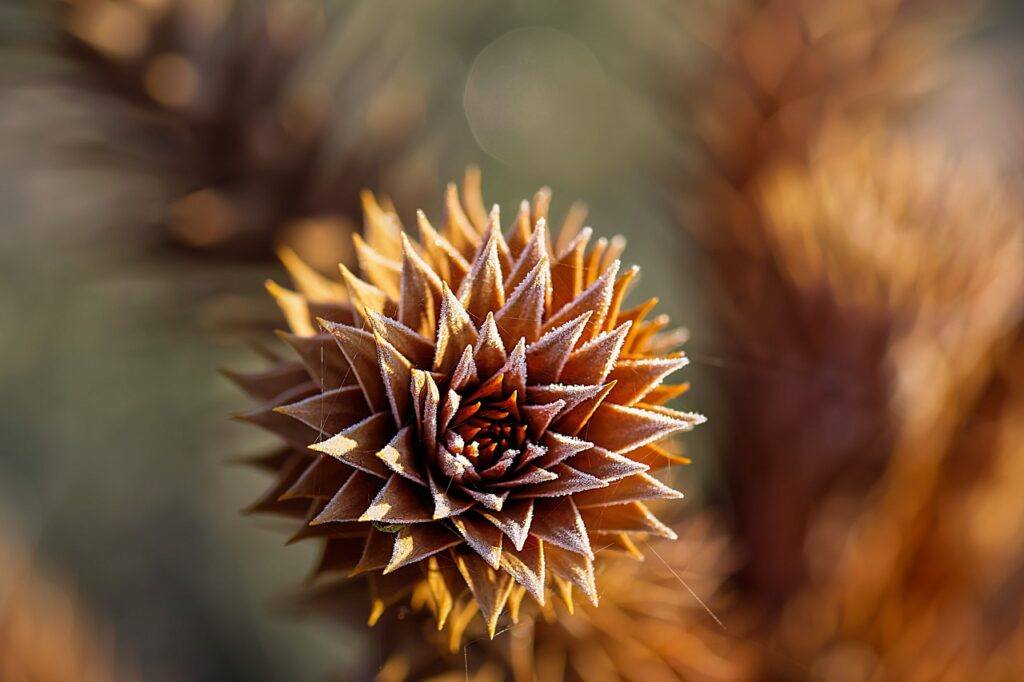
Broken Branches
If a branch has become damaged it will turn yellow to brown as it dies.
This can happen in strong winds.
It may fall naturally, or if not fully snapped it may remain in the tree at an angle.
How to fix:
- If feasible (ie you can reach the broken branch safely) prune the branch using strong loppers and wearing strong gloves.
- Sterilse the shears before and after to ensure a clean cut.
- If this is not an option then leave it and wait for it to fall naturally, being careful whenever in the vicinity.
- If it begins to damage other branches or the point of breakage becomes infected, engage a tree surgeon to come and remove it professionally.
Scale Insects
Scale insects are little bugs that eat both the leaves and woody stems of many trees and shrubs, such as Bay trees.
Adults look like miniature limpet shells stuck to the leaf or branch.
If left untreated their numbers can increase and they can begin devitalise the plant causing discolouration.
There can also be a sticky residue which forms a black sooty mould.
It is easier to address when the insects are young before they form the shell that clamps them to the plant.
How to fix:
- If you notice an infestation it is best to contact a professional, as they will have access to appropriate chemical control.
- If you cannot source a professional then Neem oil is an option, with repeat sprays before dawn and dusk, for 10 days.
Fungus: Rust
Rust is a very common fungal pathogen that attacks many different types of plant.
It commonly occurs when the weather has been warm and moist.
It can present as small yellow brown blotches or pustules on leaves/spines and stems.
These then turn yellow as the health of the plant is compromised.
How to fix:
- If only parts of the Monkey Puzzle tree are affected and it is feasible to do so, carefully remove those branches and burn them.
- Sterilise any tools both before and after use to minimise contamination.
- If the whole tree is infected you could try Neem Oil which can be used as an effective treatment – apply as directed.
Fungus: Armillaria Root Rot “Honey Fungus”
As mentioned above, if the ground becomes waterlogged around the roots of the Monkey Puzzle tree, then conditions are right for the development of Armillaria Root Rot, known as Honey Fungus.
You may see a white fungal substance between the bark and the stem, usually starting at ground level.
This can then seep through the bark which cracks and rots, creating a mushroomy smell.
There will be rhizomorphs or “boot laces” that are the fungal black root like structures that run through the soil.
There are also sometimes honey coloured mushrooms at the base of the plant in autumn (hence the name), although these are not always present.
Affected plants become stunted with small yellowing spines / leaves and slow growth.
The Monkey Puzzle tree will then start to fail as the roots and trunk become compromised.
How to fix:
- Unfortunately there is no cure for Armillaria Root Rot “Honey Fungus”.
- Prevention is better than a cure so avoid creating overly moist soil conditions and maintain good airflow around the base.
- Use clean compost and mulch from verifiable sources.
- If your Monkey Puzzle is infected then it is best to remove it entirely including the roots.
- Dispose of all infected material (not in the compost heap).
- Dig the surrounding soil to break up the rhizomorphs.
- Consider adding a barrier in the soil (strong plastic pond liner for example) to stop it spreading if you have other vulnerable plants in the area.
Final Thoughts
The Monkey Puzzle tree is a fantastic ornamental addition to your garden.
They are actually pretty tough and rarely succumb to infections or ill health.
If your Monkey Puzzle is turning yellow or brown it will likely be one of the reasons above.
In most cases it can be treated and resolved.
If your tree has any issues not covered above, then please get in touch and I will do my best to help.
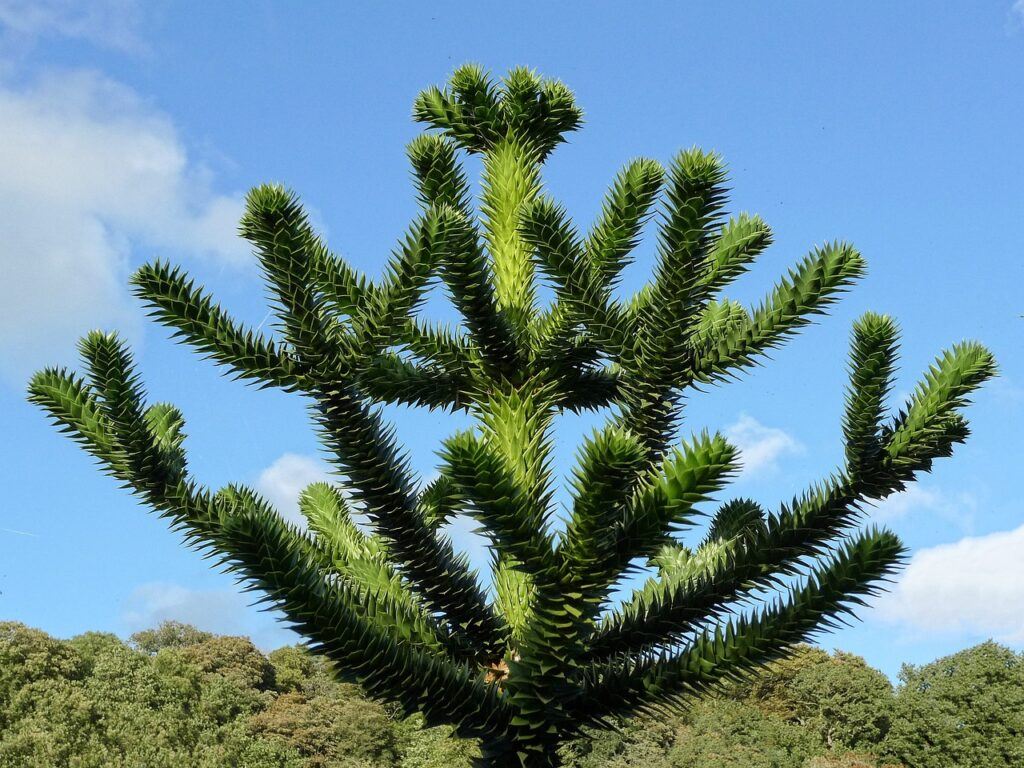

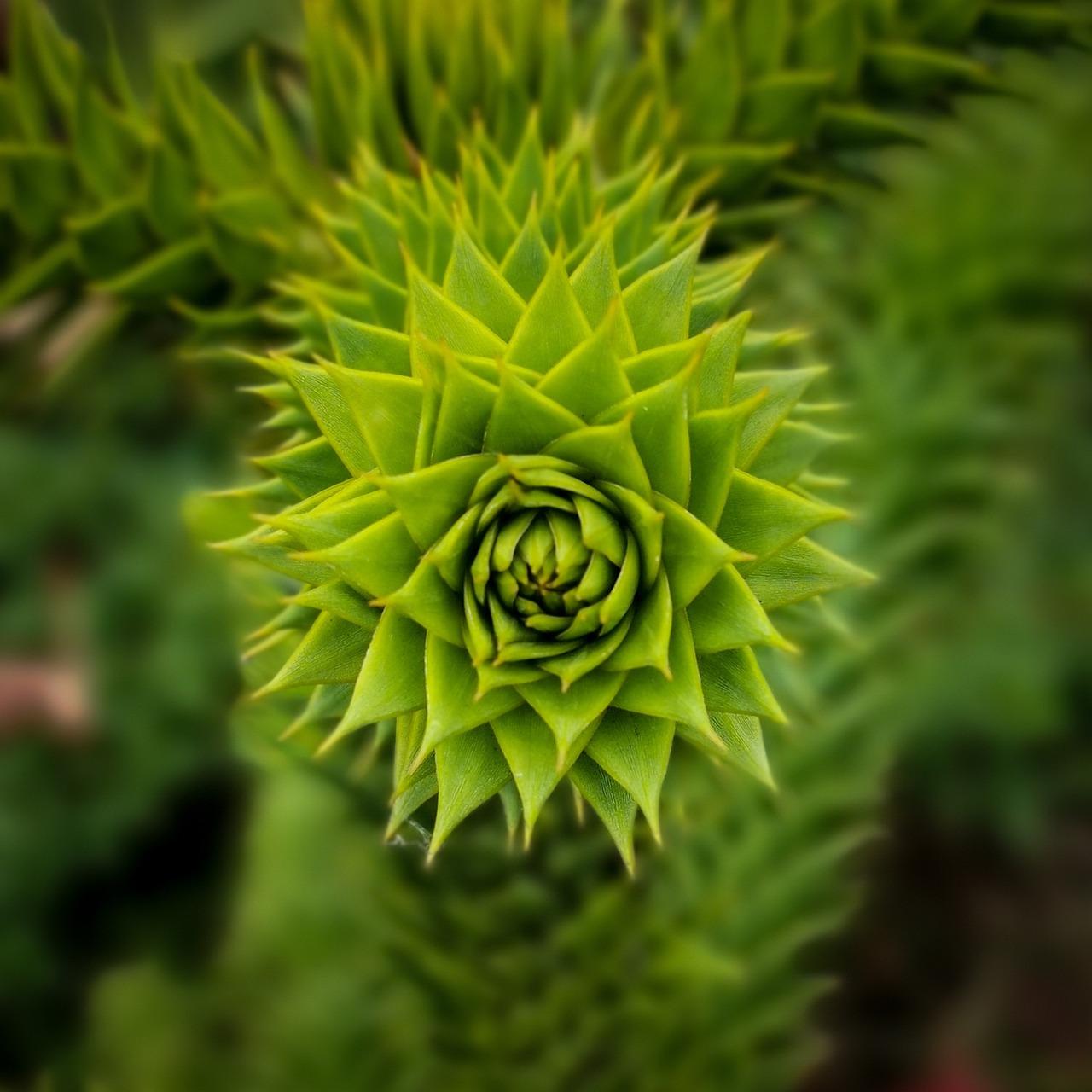
Hi, thanks for this really helpful post and I wonder if I could get a steer on solving a problem?
I transplanted a 1 metre tall monkey puzzle tree from pot to garden about a month ago (without reading your post, obviously).
It’s well watered, mulched in sun (when there is any in November in the UK) but the leaves have started to yellow. It’s gradual and most branches only at the tips but clearly progressing.
It looks like it is probably transplantation stress but is there anything I can do now that it’s been in for a month? Should I dig it up and make a bigger hole, more compost etc or just keep it watered and hope for the best?
Many thanks
Hey Ewan,
Thanks for your email, apologies for the delay in coming back to you, I have been on a short break.
It does sound like transplantation stress – can I ask is the soil you have fairly free draining?
If so then it should right itself in time.
I wouldn’t move it again as this could cause further stress, especially with the weather getting colder.
Ideally I would recommend leaving it in place until the spring, when you should start to see some new growth.
Winter is a time of natural dormancy so the plant may be shutting down for the season.
Don’t over water during this time in case it gets too wet, the soil should be just moist.
Don’t fertilise either until the spring, and even then unless the new growth is pale, mulching will probably be all that is needed.
I hope this helps, let me know how it gets on!
All the very best,
Sue
mygardenheaven.com